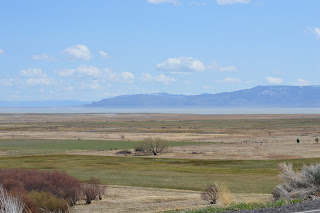Watershed Health
We are connected to the watershed in which we live. What’s a watershed you ask? A watershed is the land that drains into the same body of water. Our actions affect not only the quality of water nearby, it also affects all connected waterways. For this reason, it is important to be aware of what chemicals we use on our homes, lawns, and driveways. Frontline produced an informative video about how polluted rainwater has damaged the water quality in Puget Sound of Seattle.
Frontline’s “Poisoned Waters” (April 21, 2009) explores Seattle’s Puget Sound and the marine life biodiversity that is currently under attack from PCBs (polychlorinated biphenyls) an endocrine disruptor which is a cancer causing toxin. The accumulation of PCBs is also occurring in other parts of the country, particularly in the Great Lakes, where PCBs amongst other toxins, is larger than can be accounted for by local sources. Band in the 1970s, PCB causing problems today leads to the quandary of locating the source. Frontline (2009) reveals a major source of the current problems, in the Puget Sound, are storm water drain-off, in addition to the legacy industrial pollutants lying in the riverbed’s sludge results of non-regulated early-century industrial growth. Strom water run-off is the number one cause of water pollution, Frontline (2009) reports. The problem occurs when rainwater strikes non-organic surfaces, such as asphalt and concrete, instead of tree canopies and/or grass and dirt. When the rain accumulates on asphalt it runs into the storm drain system carrying with it all the chemicals deposited from vehicle oils, exhaust, garbage, and cleaners, to name a few. Conversely, grass and dirt filters the water before it enters the ground water then into the rivers. Drainage run-off on the other hand enters directly into the river from the drainage system with no opportunity for natural filtration.
What can you do?
Avoid impermeable surfaces (solid surfaces such as asphalt and concrete driveways and sidewalks) – instead use a mix of solid surface and gravel or vegetation
Keep storm drains clear of debris – keep leaves and lawn clips out of the storm water drains – lawn clippings and leaves contain phosphorous – too much phosphorous in the water cause algae to thrive resulting in algae blooms.
Lawn care – use phosphorous-free fertilizers - do not over-fertilizer – test soil before adding fertilizer – excess fertilizer flows into the storm water – too much causes algae blooms
Control soil erosion – soil is easily moved by water - soil contain phosphorous – excess soil in the water increases phosphorous levels
The Take Away
- Keep your lawn healthy so it can absorb rainwater.
- Remember to keep the street drains clean and clear of debris.
- Pick-up pet waste.
- Do not wash chemicals down the drain.
- Do your part to keep our waters clean.
Reference: Frontline. 2009. “Poisoned Waters”. WGBH Educational Foundation. https://www.pbs.org/wgbh/pages/frontline/poisonedwaters/




Comments
Post a Comment